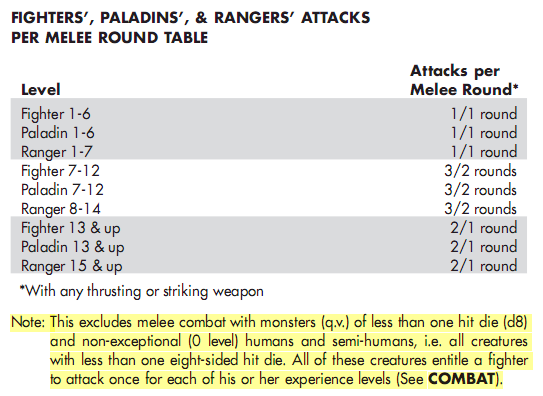Spells Beyond Those At Start:
Naturally, magic-user player characters will do their utmost to acquire books of spells and scrolls in order to complete their own spell books. Totvhose acquired, the magic-user will add 1 (and ONLY 1) spell when he or she actually gains an experience level (q.v.) . Therefore, most will be frantically attempting to purchase or cozen spells from non-player character magic-users, or even from other ployer character magic-users.
How you handle NPC magic-users is of utmost importance. There is a special section of the rules regarding non-player characters, and you should follow the suggestions therein carefully. By doing so, players will find that their magic-user characters are unable to acquire new spells -at worst - ar must pay so dearly for them in money, magic items, and quests that the game is hardly worth the candle. Of course they will pay the price nonetheless, and that will help you to maintain the campaign as fresh and challenging, as it will rid it of excess treasure and give player characters reason to adventure at the same time.
Superior players will certainly co-operate; thus, spells will in all probability be exchanged between PC magic-users to some extent. No special sanctions need be taken to prevent such exchange - although this cooperation should never be suggested or otherwise encouraged, either. The DM should leave this interaction strictly alone. This is NOT the case when PCs deal with NPC henchmen or hirelings. Non-player character hirelings or henchmen will ABSOLUTELY REFUSE to co-operate freely with player characters, even their own masters ar mistresses. Again, this matter is dealt with separately under the section pertaining to the DM's role in operating henchmen and hirelings. As a general rule, they will require value plus a bonus when dealing with their liege. If they will deal with other PCs (or NPCs) at all, they will require double value plus a considerable bonus. For example, Thigru Thorkisen, Magician in the hire of Olaf Blue Cheeks, a 10th level Lord, knows the spell, suggestion; and Olaf’s associate, Halfdon the Necromancer, requests that he be allowed to copy this spell into his book of third level spells. If Olof is willing, Halfdan can approach Thigru. If Halfdan has been at least civil to the magicion, Thigru will ask nothing more than a third level spell in return, plus another spell, plus some minor magic item such as a set of three potions, a scroll of 3 spells, or perhaps a ring of invisibility. If Holfdan had formerly insulted the magician, then the price would be more dear; but supposing the necromancer had actually saved Thigru's life at one time, the cost would be reduced to but a spell exchange and a single potion or scroll of 1 spell.





